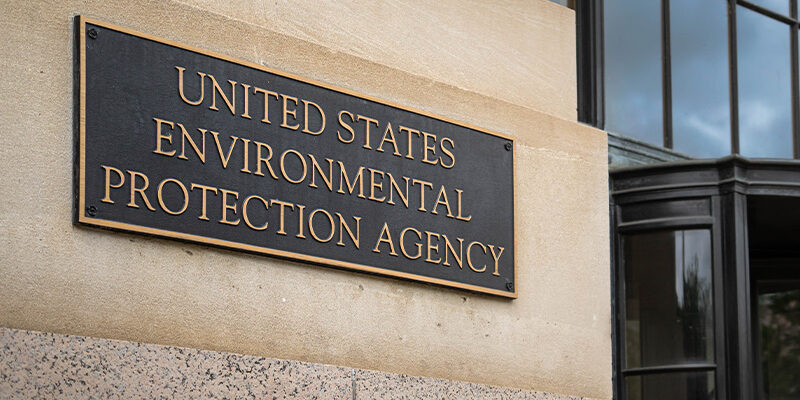COVID-19 Updates: Supreme Court Strikes Down Vaccine Mandate for Private Employers
UNITED STATES—January 17, 2022—As we enter the third year of the COVID-19 pandemic, the world continues to grapple with its impacts. The virus is mutating, leading to new variants causing surges around the world. The economy is also struggling with ongoing labor and supply chain shortages contributing to rising inflation.
Read below for regular coronavirus updates.
The arrival of multiple effective vaccines has dramatically changed the landscape, but vaccines, masks, and mandates continue to be a political battleground and clinical trials to vaccinate the youngest children are ongoing. Complicating vaccination efforts is the fact that their efficacy wanes, necessitating boosters, and new variants like Omicron are better able to escape the vaccines’ defenses. As a result, individuals and businesses continue to face tough questions about how to safely live and work in a post-pandemic world.
January 17, 2022
COVID-19 Updates: Supreme Court Strikes Down Vaccine Mandate for Private Employers
Workplace mandates fail legal challenge
Last week, the U.S. Supreme court blocked the Biden administration’s rule that large private companies must require all employees to be vaccinated or test weekly for COVID-19, according to NPR. The rule, implemented through the Occupational Health and Safety Administration (OSHA), was based on the premise that COVID-19 presents a workplace safety issue and therefore, falls under OSHA’s authority to regulate. If enacted, the mandate would have applied to all companies with 100 employees or more, affecting 84 million workers. However, the Supreme Court ruled that such a broad mandate was a public health initiative rather than a workplace safety issue, and therefore, not within OSHA’s authority. Employers may still choose to enact vaccine mandates themselves (and many large companies have, including about one third of Fortune 100 companies), but the federal government cannot require employers to do so.
In contrast, NPR reports the Supreme Court upheld a rule requiring mandatory vaccinations of all healthcare workers in facilities receiving Medicare and Medicaid funding. This ruling stated that the Centers for Medicare and Medicaid Services does have the authority to require vaccination as a condition for any healthcare providers receiving federal funding.
Soaring cases
These court decisions come in the midst of the Omicron surge, which has sickened more people than any previous wave of the pandemic. More than 800,000 new cases are being reported each day, more than triple the daily cases from last January’s peak, according to The New York Times. While Omicron does appear less severe than previous variants, hospitalizations have also reached an all-time high due to the explosive case numbers—about 150,000 patients are currently hospitalized with COVID-19, though this figure includes those hospitalized for other reasons and testing positive for coronavirus.
December 17, 2021
COVID-19 Updates: Pfizer’s Covid Pill
A new hope
The world could soon have another weapon in its arsenal to battle the ongoing Covid-19 pandemic. Pfizer announced the results of a key clinical trial showing that its oral Covid medication, Paxlovid, was highly effective at preventing severe disease and hospitalization in patients diagnosed with Covid-19, according to The New York Times. The antiviral pill will be prescribed by a physician within five days of a patient’s onset of symptoms. The trial tested the drug in unvaccinated people who tested positive for Covid-19 and were at high risk of developing severe disease, and the results showed an 88% reduction in the risk of hospitalization and death among these patients. Laboratory tests also show Paxlovid attacks a key protein in the Omicron variant, suggesting the drug will be effective regardless of the variant. As the U.S. faces an oncoming Omicron wave that threatens to overwhelm already strained hospitals, a drug that could keep unvaccinated people out of the hospital could be a game-changer.
A race against Omicron
Pfizer has already asked the FDA for emergency use authorization based on preliminary data, and these new results will strengthen that application. The New York Times reports that approval could come in a matter of days and patients may be able to receive the drug by the end of the year. Following approval, the biggest challenges are logistical. Paxlovid is a five-day course of 30 pills taken three at a time at home, so the first challenge is manufacturing and delivering enough medication quickly enough to stave off the worst of a potential Omicron wave. The New York Times reports that Pfizer is expected to provide enough medication in the U.S. for just 300,000 patients by the end of February with production sharply increasing after that. The federal government has ordered enough pills for 10 million patients.
A second challenge is testing. Paxlovid must be prescribed within five days of the onset of symptoms, so patients must be tested by a healthcare provider, receive the results of the test, and receive their prescription within that short time in order for the drug to be effective. The percentage of Omicron cases has already risen sharply over the past week, according to The New York Times, and experts warn that the U.S. could see a substantial surge of new infections as soon as next month, ahead of widespread availability of Paxlovid.
December 10, 2021
COVID-19 Updates: The Omicron Variant
What we know
Omicron, the latest Covid-19 variant of concern, has begun spreading in the U.S. First detected in South Africa on November 23, Omicron has spread to 50 countries and is characterized by the WHO as “high-risk” due to mutations that appear to make it more contagious than any previous variant, according to The New York Times. The first U.S. Omicron case was discovered December 1 in California, and in the 10 days since, it has been found in 19 states. Although the current Covid surge continues to be driven by cases of Delta, experts are confident that Omicron will quickly become the dominant variant, likely driving a fresh wave of cases as we head into the heart of the winter holiday season. In South Africa, Omicron rose to account for 75% of new cases in less than two weeks.
In addition to being highly contagious, Omicron also carries mutations that make it more adept at evading the body’s immune response. Initial reports from South Africa suggest the variant is spreading more than twice as fast as Delta, The New York Times reports, but scientists are still studying Omicron to determine the precise combination of factors that is allowing such rapid spread. Last Thursday, South Africa reported more than 11,000 new cases, representing a 35% jump over the previous day. One early finding is that Omicron appears to evade the natural immunity gained from a previous infection, making reinfections more common.
Some good news
Keeping in mind that all findings are still preliminary, there are two pieces of potential good news. The first is that initial reports suggest Omicron may cause less severe illness than previous variants, according to The New York Times. While hospitalizations and deaths always lag several weeks behind any new surge of cases, doctors in South Africa are noting that so far, many of their patients are much less sick than those they have treated in the past.
The second piece of good news is that the booster shots appear to be highly effective against Omicron. Laboratory tests indicate that people who received only two doses of the Pfizer vaccine may be vulnerable to breakthrough infections, but those who received their booster had high levels of protection, The New York Times reports.
Experts report that staying up-to-date with vaccines and boosters continues to offer the most effective line of defense, yet out of 200 million vaccinated people in the U.S., only 50 million have gotten their booster—leaving the majority of Americans vulnerable to a breakthrough Omicron case. Additionally, many hospitals around the country are already full and straining the resources of healthcare providers. NPR reports that 38% of hospitals are under high or extreme stress that is likely to worsen as people gather indoors during the holidays and Omicron spreads. Even a surge of relatively milder illness can overwhelm already strained hospitals and lead to unnecessary suffering and death.
November 19, 2021
COVID-19 Updates: U.S. Cases on the Rise Again
Another Covid winter
Coronavirus cases in the U.S. are rising once again. The New York Times reports that nationwide, average daily cases are up 30% over the past two weeks, a fact that is worrying as we head into the holidays and colder months when more people will likely be traveling and gathering indoors. Outbreaks continue to worsen across much of the Upper Midwest where Michigan cases are up 78% from two weeks ago and Minnesota cases are up 53%.
We saw similar trends this time last year, but this time around, millions of people have been vaccinated. That will likely slow the winter surge, but it won’t stop it, according to The New York Times. Covid-19 appears to follow a season pattern much like the flu, with cases peaking during winter months when the virus spreads more easily. Experts expect that there will be another peak in cases over the winter holidays, but it will likely not be nearly as bad as last year’s. However, even with the virus circulating mostly among unvaccinated people, hospitals could still be overloaded if cases spike, especially in areas with lower vaccination rates. For example, in California, about 75% of adults are vaccinated, but regions like far Northern California and the Central Valley are experiencing higher transmission levels than the rest of the state and are preparing for another winter surge, according to The New York Times.
Getting the vaccine, including the booster shot, is the best way to protect yourself from severe illness and hospitalization. This week, the FDA and CDC authorized and recommended Pfizer or Moderna booster shots to all vaccinated Americans at least six months past their last shot. Following FDA authorization of Pfizer’s vaccine for younger children, about 10% of kids aged 5-11 have received their first dose, according to The New York Times.
November 12, 2021
COVID-19 Updates: Vaccine Mandates Challenged in Court
The legal battle begins
The Biden administration’s mandate that large private employers require their workforces to either vaccinate or test weekly for COVID-19 has already received its first legal challenge. The U.S. Court of Appeals for the Fifth Circuit in Louisiana issued a stay that temporarily blocks the new OSHA rule from taking effect, according to The New York Times. The rule’s first major deadline is December 5, when large companies must begin requiring unvaccinated workers to wear a mask indoors. January 4 is the deadline for requiring vaccinations.
The suit, filed by a group of businesses, advocacy organizations, and several states including Texas and Louisiana, claims that OSHA does not have the authority to issue such a mandate and that the rule would need to be passed by Congress. The suit suggests that the purpose of the rule is to try and end the pandemic, and as such, falls outside OSHA’s purview over workplace safety. The Department of Labor’s chief legal officer, Seema Nanda, issued a statement suggesting unvaccinated workers do pose a grave threat to worker safety, and as such, the vaccine mandate is within OSHA’s authority to issue. “We are fully prepared to defend this standard in court,” she said, according to The New York Times.
Eleven states, including Texas, Mississippi, South Carolina, and Utah, filed a second lawsuit against the mandate in the Eighth Circuit Court of Appeals in St. Louis, and additional suits are likely forthcoming with opponents of the rule arguing that it is unconstitutional. These challenges may turn out to be a procedural hiccup, or they could succeed in blocking the mandate. For now, the Fifth Circuit’s ruling temporarily suspends the rule pending further action from the court, according to The New York Times. If the court issues a permanent injunction, OSHA could take the case to the Supreme Court to appeal the injunction.
November 5, 2021
COVID-19 Updates: Vaccine Deadline for Large Private Employers
New vaccine mandates
Private employers with 100 or more employees will be required to mandate Covid-19 vaccinations for their workers or require weekly testing, according to The New York Times. The Biden administration, invoking emergency powers over workplace safety, has set the deadline for the vaccine mandate at January 4, 2022. About 84 million workers will fall under this requirement, and about 31 million of these are currently unvaccinated. A second mandate for healthcare facilities receiving Medicare and Medicaid funds requires all workers to be vaccinated by January 4 with no option for weekly testing.
The new OSHA rule allows companies to get through the holiday season before imposing vaccine mandates, but it does require all unvaccinated workers to wear masks beginning December 5. Employers must provide paid time off for the vaccinations and any side effects, but they do not have to pay for or provide tests; workers choosing not to be vaccinated must pay for weekly testing themselves unless a union agreement states otherwise. The rule does not apply to remote or outdoor workers. The New York Times has compiled an FAQ for employers regarding the new mandates.
Mandates on private companies are controversial
This is the first broad government mandate extending into the private sector, and as such it is controversial. The New York Times reports that attorneys general in 24 states are threatening lawsuits with some industry trade groups also expressing opposition. Some major companies, such as United Airlines, have already mandated vaccines for their employees. Others, like Walmart, have required vaccines for corporate staff, but not their entire workforce. Many companies have strongly encouraged and even incentivized vaccines but stopped short of mandating them.
Those in favor of the new rule see it as a way to protect frontline workers and make workplaces safer while hopefully helping to bring the U.S. closer to herd immunity. Opponents cite cost and logistical concerns as well as fears of exacerbating the labor shortages that are already plaguing the nation. Despite the potential controversy, the mandates could soon extend even further, The New York Times reports. The Labor Department has opened a 30-day comment period to explore the possibility of extending the new vaccine requirements to smaller companies as well.
October 29, 2021
COVID-19 Updates: A Look at the Great Resignation
Labor shortages
A record 4.3 million workers quit their jobs in August, following the four million who left jobs in July in trend that has become known as the Great Resignation. These numbers include those who left jobs for better or higher-paying opportunities as well as those leaving the workforce by choice, but they do not include retirements, according to The New York Times. As we move through the fall, labor shortages continue to be an issue across the country and across numerous industries such as education, healthcare, and retail. The hospitality and service industries have been particularly hard-hit. Hourly wages have risen in the last few months as employers compete to bring workers back, but the labor force continued to shrink in September.
A combination of factors seems to be fueling the resignations, The New York Times reports. One factor is Covid concerns, especially among frontline workers as the Delta variant surged through the summer and into fall. The pandemic has also caused many people to rethink their priorities, leading some to look for more fulfilling work while others realize they can live more simply and work less. Disruptions to childcare and education has forced some parents (especially women) to leave the workforce. Additionally, some of the pandemic relief programs have made it possible for workers to quit jobs and hold out for positions that pay more and provide superior benefits and working conditions.
The New York Times suggests that for the moment, workers have the upper hand with many companies lacking the staff to continue operations as normal. You may have noticed some stores and restaurants have reduced their hours due to labor shortages, and no doubt you’ve taken note of just how many companies are advertising to hire workers. It’s unclear how long this standoff will last, but even as the latest Covid surge recedes, supply chain issues and labor shortages continue the pandemic’s impact on the economy.
October 22, 2021
COVID-19 Updates: FDA Approves Moderna and J&J Boosters
More boosters on the way
This week, the FDA approved booster shots for the Moderna and Johnson & Johnson vaccines, making all vaccines given in the U.S. approved for boosters, according to The New York Times. Like the Pfizer booster, Moderna and J&J recipients who are age 65 or older or who are at higher risk due to health conditions or occupational hazards (such as teachers, health professionals, and other frontline workers) will be eligible for the shots. A half-dose Moderna booster is authorized at least six months after the recipient’s second shot of the original vaccine. Those receiving a Johnson & Johnson booster may do so at least two months after their original dose.
Additionally, the FDA approved “mix-and-match” boosters for all vaccines, meaning that the booster does not have to match the recipient’s original vaccine. Studies suggest that mixing vaccines could provide a bigger boost to immunity, especially in the case of the J&J vaccine, which has proven to be less protective than the Moderna and Pfizer vaccines, according to The New York Times. However, regulators did not recommend one booster or booster strategy over another. The boosters will likely be available as soon as the CDC director signs off on the FDA approvals.
The FDA’s vaccine committee is also expected to make a recommendation on Tuesday about authorizing the Pfizer vaccine for children ages 5-11. Additionally, the FDA may soon expand booster access to all vaccinated adults, regardless of risk factors.
October 15, 2021
COVID-19 Updates: Natural Immunity vs. the Vaccine
Natural immunity varies
As vaccine mandates around the country continue to draw controversy, many people are questioning whether those who have natural immunity due to recovering from a Covid-19 infection really need the vaccine at all. As The New York Times reports, experts agree that natural immunity isn’t easy to quantify. Covid survivors do have some natural protection from reinfection, but how strong that protection is and how long it lasts is highly variable and hard to predict. Factors like age, health status, and especially the severity of the infection all impact the robustness of natural immunity, according to The New York Times. Very severe infections may result in immunity that lasts for up to a year, but eventually those antibodies will fade, leaving people at risk of reinfection and infection by a new variant.
Natural immunity is difficult to study because it is so variable, but one study showed that in about 30% of recovered people, neutralizing antibodies were undetectable after about two months, according to The New York Times. These antibodies are not the only factor in natural immunity, but even if the subsequent infection is mild or asymptomatic, Covid-recovered people may still spread the virus to others, contributing to the risk of community transmission.
Vaccines boost protection
On the other hand, when those who recovered do get vaccinated, the shot acts as a booster for the body’s natural immunity, providing particularly strong protection against infection, according to The New York Times. Experts believe natural immunity combined with the vaccine will likely provide long-lasting protection and robust immunity against variants. This is because natural immunity produces more diverse antibodies which can protect against more variants, and the vaccine then boosts those antibodies, ensuring they don’t fade away.
Immunity from the vaccine is also far more consistent and easier to study and track. This allows scientists to better predict when boosters may be needed to offer continued protection against infection and community spread, according to The New York Times.
October 7, 2021
COVID-19 Updates: U.S. Deaths Surpass 700,000
Preventable deaths
As of last week, more than 700,000 people in the United States have died of COVID-19, surpassing the 1918 influenza outbreak, which claimed about 675,000 lives. COVID-19 is now the deadliest pandemic in American history, according to The New York Times. Although vaccines are widely and readily available to everyone over the age of 12 in the U.S., vaccine hesitancy and misinformation has left millions vulnerable to severe illness and death. As the highly contagious Delta variant surged here and abroad this summer, the U.S. had one of the highest death rates among countries with a plentiful vaccine supply.
What is significant about this milestone is that the majority of the most recent 100,000 deaths were entirely preventable. More than 90% of COVID-19 deaths are among the unvaccinated. The data is not yet complete, but so far the CDC has identified just 2,900 vaccinated deaths among the 100,000 people who died since the middle of June, according to The New York Times. The most recent deaths were also among younger populations, with 40% being under the age of 65. Because those 65 and older are the most likely to be vaccinated, the Delta surge hit the American workforce harder than previous virus surges.
Delta subsiding
The good news is that the Delta surge appears to be subsiding, following the same two-and-a-half-month cycle seen in other countries and in previous surges. It’s unclear exactly why Covid surges tend to follow a two-month cycle, and there are certainly exceptions, but with healthcare resources stretched thin around the country, a steady decline in cases is a welcome relief. The New York Times reports that daily new infections have fallen by 35% since September 1. Hospitalizations and deaths have also begun falling, though these numbers tend to lag a few weeks behind new case data.
As immunity increases through a combination of vaccination and infection, some experts are hopeful that this will be the last major wave able to cause such widespread death in the U.S., according to The New York Times. We are also moving closer to having vaccines available for young children, which is another reason to be hopeful. However, it’s important to note that the pandemic has continued to surprise us over the past eighteen months, and no one can predict what’s next with certainty. Vaccines, masks, and social distancing continue to provide the best protection against infection, even with cases in decline.
October 1, 2021
COVID-19 Updates: Employers Enforce Vaccine Deadlines
Employer mandates prove largely effective
This week marks the arrival of many deadlines for employer-mandated vaccines around the country. In California, for example, healthcare employees had to be vaccinated by the end of September or risk termination. According to The New York Times, so far employer mandates are proving largely effective with examples rolling in from companies where hundreds of previously unvaccinated employees are receiving their shots in the weeks leading up to the deadline. Cedars-












